Plants with Blue or Purple Flowers
Blue and purple flowers form the smallest group within the colour sections, but there are still some important groups, including a number of spring bulbs, violets, bellflowers, forget-me-nots, speedwells and the borage family.
As well as flower colour, it is important to take careful note of the exact petal shape - are the petals rounded, or do they came to a sharp point, for example; are there gaps between the petals or do they overlap; are the flowers solitary, or arranged in spikes or bunches.
Within the colour sections, the pictures are grouped so that similar-looking (though not necessarily closely-related) plants will be near each other.
This should help to reduce your search time. To keep things concise, not all species are shown in the colour keys, so you may have to go for a 'best match' to get you through to the next stage of the identification process. Particularly in large families where there are a number of very similar species, a representative species is shown here, but clicking on it will take you to a page that tells you how to tell the more difficult species apart.
Many plants will be obviously one colour or another, obviously five petalled, or obviously a woody shrub, etcetera. But many will be debatable. In such cases, I have tried to imagine how a flower might be perceived by others, especially beginners to plant identification. Generally this results in a plant appearing in more than one place on these pages, but some still remain problematic. In particular, the section labelled 'tubular flowers' contains a variety of flowers that might be considered to fall into that category and these generally have petals that are fused together to fully surround the sexual parts of the flower. But these tubes might be elongate like a pencil, or broad and bell-like. Flowers of two colours are entered under the colour that covers most of the flower, but truly bicoloured flowers may be entered under both colours. Woody plants with green stems that might not be considered woody, are entered under their flower colour or shape, as well as under the woody plants sections.
If you still can't find your plant, you either have something very interesting that you may wish to tell me about, or I just haven't got a picture
of it yet - I'm still working on the latter!!
Click on the pictures below to go to the species pages.
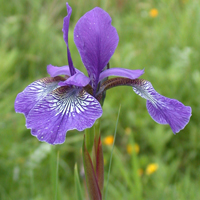 |
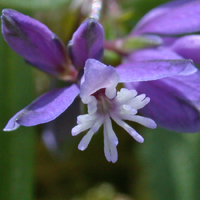 |
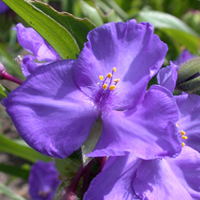 |
| Irises - Three large, round petals hanging down, plus three smaller, less obvious petals standing more or less upright in the centre |
Milkworts - Small spikes of white, pink or blue flowers, each flower with the middle petal rolled into a thin tube and with a tiny,
pale beard |
Spiderworts - Flowers in loose clusters on fleshy stems, above tussocks of grass-like leaves |
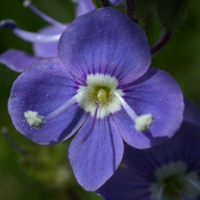 |
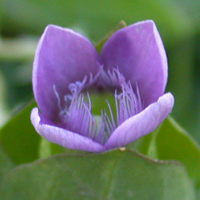 |
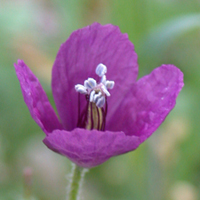 |
| Speedwells - Bright flowers with prominent stamens, solitary or in small clusters |
Gentians - Narrow flowers above smooth leaves |
Violet Horned Poppy - Single flowers with large, tissue-thin petals - rare with no recent records |
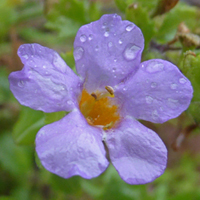 |
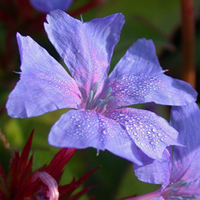 |
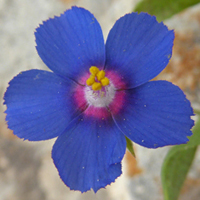 |
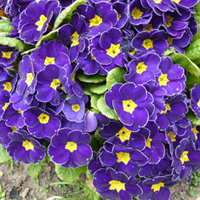 |
| Bacopa - Flowers with a tubular base and yellow in the centre, on low, trailing plants |
Leadworts - Flowers in clusters with a long, tubular base and red bracts. Low, spreading plants |
Pimpernels - Small annuals of cultivated ground |
Primroses - Early spring flowers in a variety of colours in grassy areas |
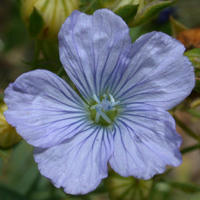 |
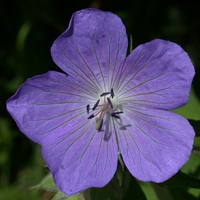 |
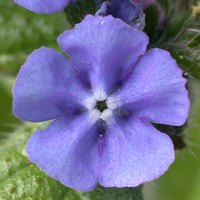 |
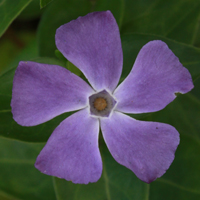 |
| Flaxes - Plants with slender stems and narrow leaves |
Crane's-bills - Broad petals, often with dark veins, leaves rounded and often deeply dissected |
Alkanets - Flattened, rounded flowers on roughly hairy plants |
Periwinkles - Low, creeping or trailing plants forming spreading colonies |
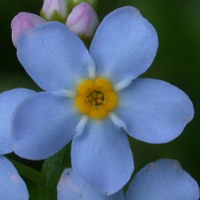 |
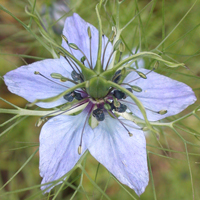 |
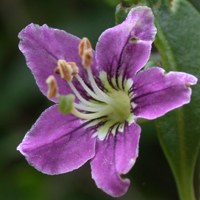 |
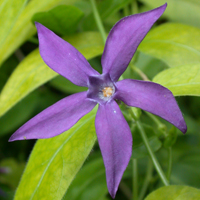 |
| Forget-me-nots - Sky blue flowers with white or yellow centres |
Love-in-a-mist - Five petal-like sepals among fine, filigree foliage; annuals of disturbed ground |
Teaplants - Solitary, purplish flowers on wiry, half-woody stems in hedgerows |
Periwinkles - Low, creeping or trailing plants forming spreading colonies |
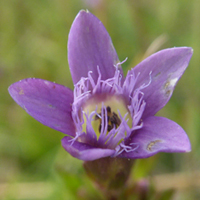 |
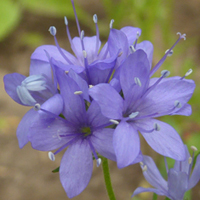 |
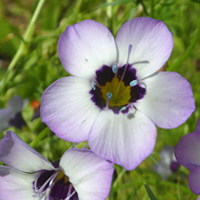 |
| Gentians - Narrow flowers above smooth leaves |
Gilias - Small annuals with flowers in tight clusters and finely cut leaves
|
Gilias - Small annuals with solitary, three-coloured flowers and finely cut leaves
|
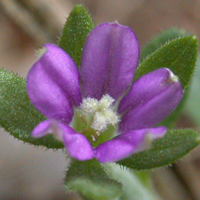 |
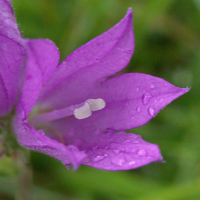 |
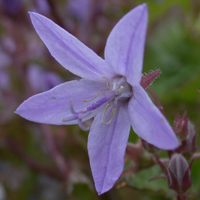 |
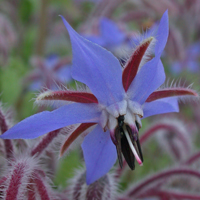 |
| Venus's-looking-glasses - Small, bright purple flowers with a green ruff, opening on sunny days |
Bellflowers - Five petals, fusing at the base into a broad, bell-shaped tube |
Bellflowers - Star-shaped flowers on trailing or upright plants |
Borage - Star-shaped, nodding flowers on bristly plants |
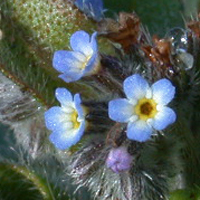 |
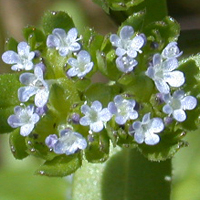 |
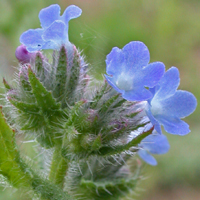 |
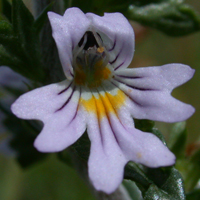 |
| Forget-me-nots - Small, roughly hairy plants of open places |
Common Cornsalad - Tiny, pale blue, almost white flowers with five petals |
Buglosses - Small flowers on roughly hairy plants in disturbed places |
Eyebrights - Small but showy, lilac flowers on upright stems; five petals fused into a tube at the base |
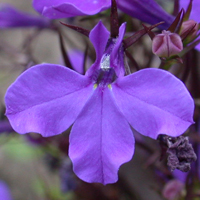 |
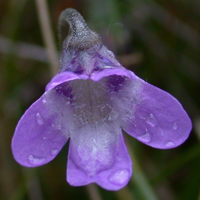 |
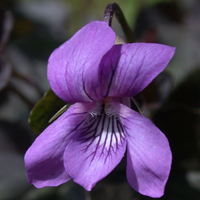 |
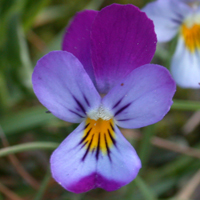 |
| Fairy Lobelia - Unequal petals, the lower three much larger than the upper two; garden escapes |
Butterworts - Unequal petals, the lower three much larger than the upper two and forming a tube at the base. Rare in bogs |
Violets - Violet to purple flowers with dark lines and sometimes a yellow patch at the centre |
Pansies - Variously purple/white/yellow flowers with dark lines at the centre |
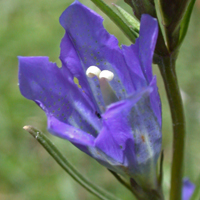 |
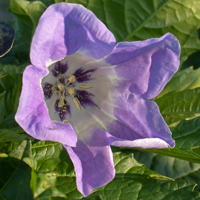 |
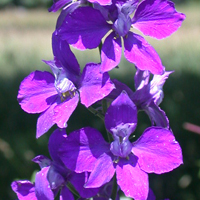 |
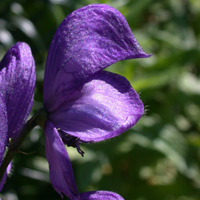 |
| Gentians - Bright blue trumpets on slender stems; rare |
Apple-of-Peru - Five petals fusing together to form a funnel-shaped flower |
Larkspurs - Five petal-like sepals, with the true petals fused into a small 'cup' in the centre of the flower; flowers various shades of blue, pink or white in an upright spike above feathery foliage |
Monk's-hoods - Five petal-like sepals, with two fused together to form a 'hood'; flowers various shades of blue or white in an upright spike |
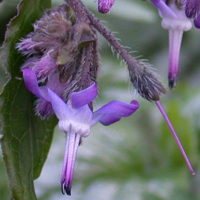 |
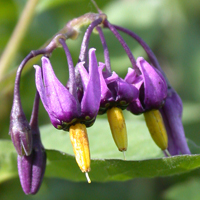 |
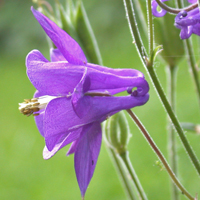 |
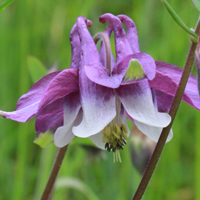 |
| Abraham-Isaac-Jacob - Strange flowers with petals that twist backwards to expose the long, central stamens |
Bittersweet - Flowers in loose clusters, often with a yellow centre |
Columbines - Complicated flowers with five petals and five petal-like sepals; petals have long nectar spurs at back. Colour may be any shade of blue, purple, pink, or white |
Columbines - Complicated flowers with five petals and five petal-like sepals; petals have long nectar spurs at back. Colour may be any shade of blue, purple, pink, or white |
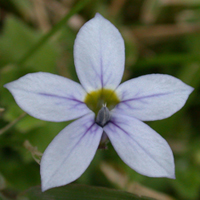 |
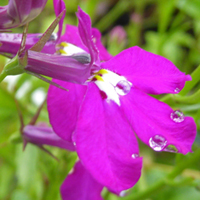 |
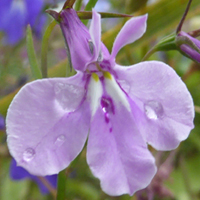 |
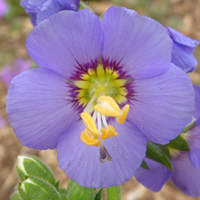 |
| Blue Star Creeper - Tiny, creeping plants usually found in lawns |
Fairy Lobelia - Unequal petals, the lower three much larger than the upper two; garden escapes |
Fairy Lobelia - Unequal petals, the lower three much larger than the upper two; garden escapes |
Common Jacob's-ladder - Small herbaceous plants with ladder-like, pinnate leaves |
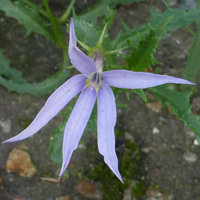 |
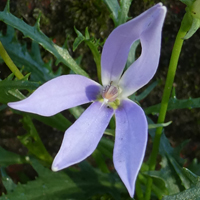 |
| Showy Isotome - Low-growing but sprawling annuals with asymmetrical flowers and ragged-looking leaves |
Showy Isotome - Low-growing but sprawling annuals with asymmetrical flowers and ragged-looking leaves |
 |
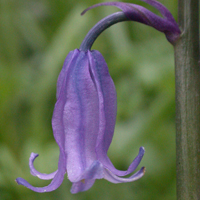 |
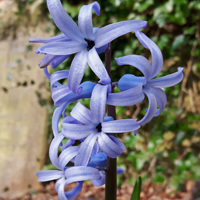 |
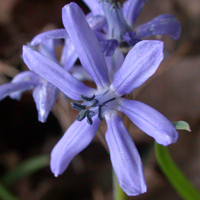 |
| Irises - Three large, round petals hanging down, plus three smaller, less obvious petals standing more or less upright in the centre |
Bluebells - Narrowly bell-shaped flowers in an open, upright spike |
Common Hyacinth - Heavily-scented flowers in a compact spike |
Squills - Six spreading petals; spring-flowering from bulbs |
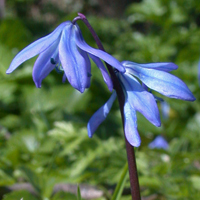 |
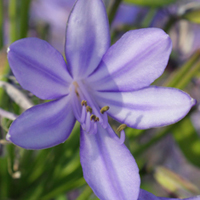 |
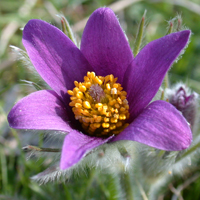 |
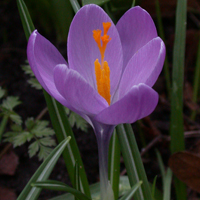 |
| Siberian Squill - Six petals on nodding flowers; spring-flowering from bulbs |
Blue lilies - flowers in a ball-shaped cluster atop a common stem |
Pasqueflower - Six petal-like sepals with very hairy backs. Now very rare, on a handful of protected sites |
Crocuses - Flowers fused into a narrow tube at the base, arising from a buried corm |
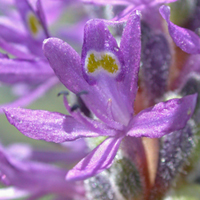 |
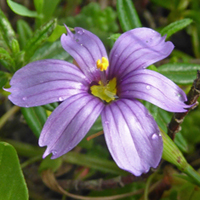 |
| Pickerelweed - Flowers crowded in upright spikes on plants growing in water |
Blue-eyed-grasses - Small herbaceous perennials with upright, grass-like leaves and tepals that have notched tips |
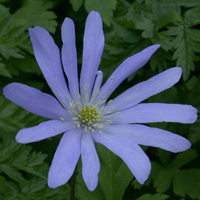 |
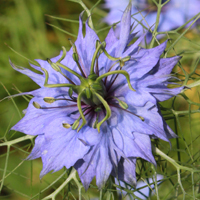 |
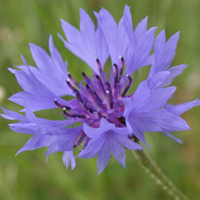 |
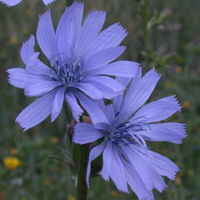 |
| Anemones - Varying number of petal-like sepals on low-growing, spring flowers. Colour may be any shade of blue, pink or white |
Love-in-a-mist - Ten petal-like sepals among fine, filigree foliage; annuals of disturbed ground |
Common Cornflower - Irregularly-shaped petals around a single head of several tiny flowers |
Chicory - Dandelion-like flowers on tall, upright stems |
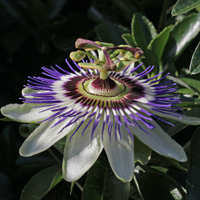 |
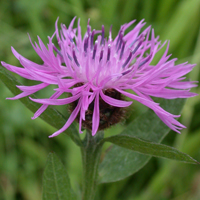 |
 |
 |
Passionflowers - Complicated flowers with 12 petal-like sepals; vigorous climbing plants
|
Knapweeds - Tight flowerheads with solid bases and 'fluffy' tops
|
Columbines - Complicated flowers with five petals and five petal-like sepals; petals have long nectar spurs at back. Colour may be any shade of blue, purple, pink, or white |
Columbines - Complicated flowers with five petals and five petal-like sepals; petals have long nectar spurs at back. Colour may be any shade of blue, purple, pink, or white |
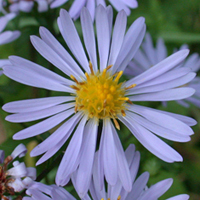 |
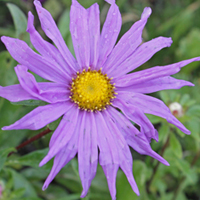 |
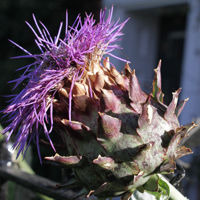 |
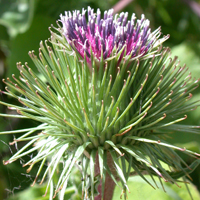 |
Asters - Popular garden plants with pale lilac to bluish, daisy-like flowers
|
Asters - Bluish-purple to pink or white petals on short plants grown for bedding
|
Cardoons - Heavy, chunky head made up of many small flowers with thread-like petals
|
Burdocks - Tight flowerheads with prickly bases atop branching plants with large, dock-like leaves
|
 |
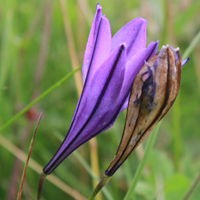 |
 |
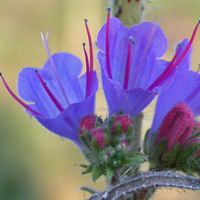 |
| Crocuses - Flowers fused into a narrow tube at the base, arising from a buried corm |
Triplet Lily - Six petals fused into a tube; stems low-growing from a bulb
|
Gentians - Bright blue trumpets on slender stems; rare |
Buglosses - Red buds, turning blue as they open and mature; prominent, long stamens
|
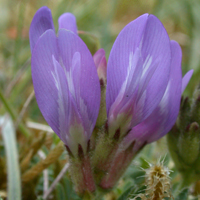 |
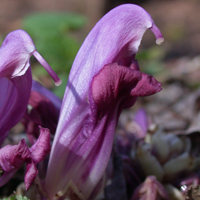 |
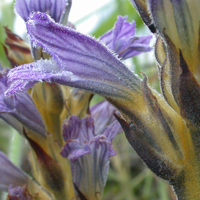 |
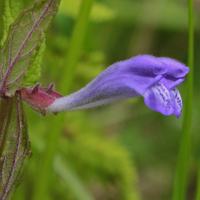 |
Milk-vetches - Blue-purple flowers in small clusters, very close to the ground with ladder-like, compound leaves
|
Toothworts - Odd, tubular flowers, emerging in clusters straight from the ground beneath poplars or willows
|
Broomrapes - Tubular flowers with broad lower lips, on an upright spike
|
Skullcaps - Tubular flowers, singly or in pairs in the leaf axils; wetland plants
|
 |
 |
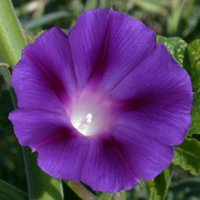 |
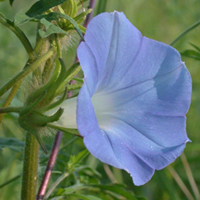 |
Bellflowers - Broadly bell-shaped flowers in narrow, upright spikes
|
Apple-of-Peru - Five petals fusing together to form a funnel-shaped flower |
Morning-glories - Climbing or trailing plants with the five petals fused to form a funnel-shaped flower; stems twining
|
Morning-glories - Climbing or trailing plants with the five petals fused to form a funnel-shaped flower; stems twining
|
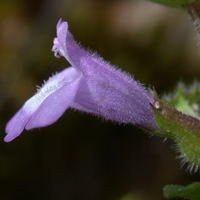 |
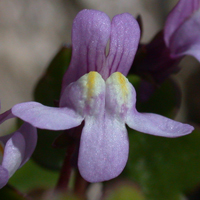 |
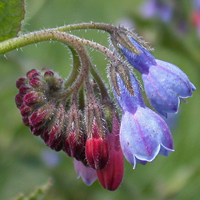 |
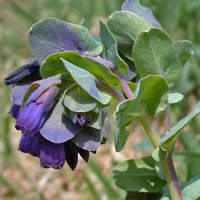 |
Mints & Dead-nettles - Narrowly tubular flowers with five fused petals, opening into a two-lobed lip
|
Toadflaxes & allies - Tubular flowers with five fused petals, opening into a five-lobed lip
|
Comfreys - Red buds, turning blue as they open and mature
|
Honeyworts - Narrowly tubular flowers in a cluster, half hidden by coloured bracts
|
 |
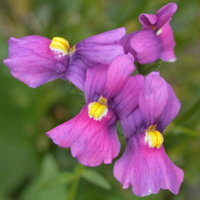 |
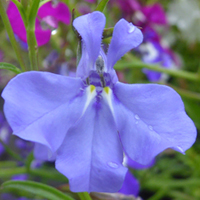 |
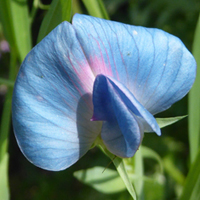 |
| Eyebrights - Small but showy, lilac flowers on upright stems; five petals fused into a tube at the base |
Cape Snapdragon - Tubular based-flowers, opening into broadly lobed lips; singly or in clusters
|
Fairy Lobelia - Unequal petals, the lower three much larger than the upper two
|
Everlasting-peas - Solitary, bluish flowers on scrambling plants with leaves bearing two leaflets and terminal tendrils
|
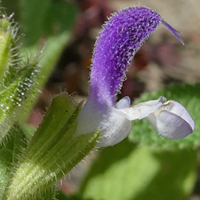 |
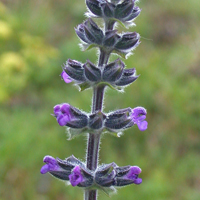 |
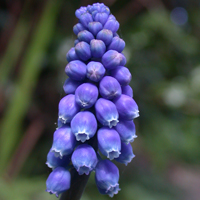 |
Blue claries - Narrow, tubular-based flowers that open into a two-lipped mouth
|
Sages - Tubular flowers in whorls above the leaves; foliage usually aromatic
|
Grape-hyacinths - Dense heads of small, rounded flowers above grass-like leaves, arising from a bulb
|
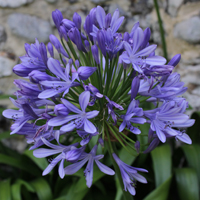 |
 |
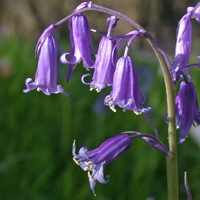 |
 |
African Lily - Showy, ball-shaped heads of six-petalled flowers, above strap-shaped leaves
|
Common Hyacinth - Heavily-scented, six-petalled flowers in a compact spike
|
Bluebells - Scented, six-petalled flowers in an open spike, above graass-like leaves
|
Grape-hyacinths - Dense heads of small, rounded flowers above grass-like leaves, arising from a bulb
|
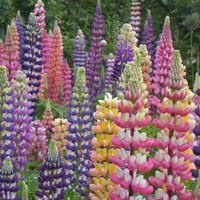 |
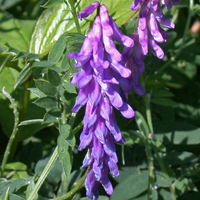 |
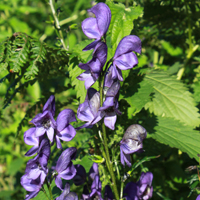 |
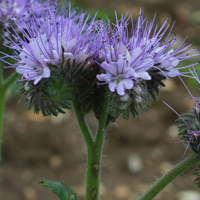 |
Lupins - Tall, showy spikes of 'pea' flowers, often in a variety of colours; leaves palmate
|
Vetches - Narrow spikes of narrow 'pea' flowers, on scrambling plants; ladder-like, compound leaves with tendrils
|
Monk's-hoods - Five petal-like sepals, with two fused together to form a 'hood'; flowers various shades of blue or white in an upright spike
|
Phacelias - Dense, curled heads of bright flowers with elongated stamens; leaves finely cut
|
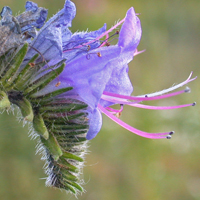 |
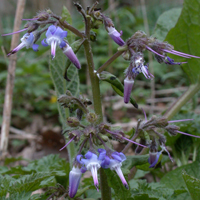 |
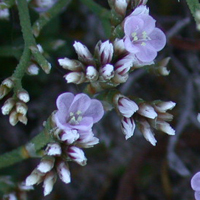 |
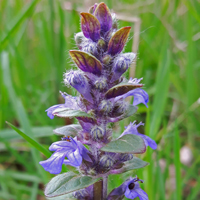 |
Buglosses - Tall, showy spikes of bright blue flowers, a few opening in turn as the side branches elongate
|
Abraham-Isaac-Jacob - Strange flowers with petals that twist backwards to expose the long, central stamens
|
Sea-lavenders - Branched heads of many, small flowers above a simple rosette of leaves; saltmarshes and coastal dunes
|
Common Bugle - Leafy spikes of large-lipped, tubular flowers
|
 |
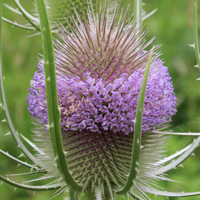 |
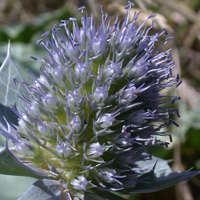 |
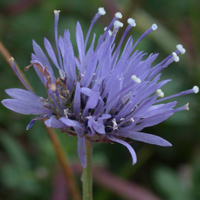 |
Common Cornflower - Irregularly-shaped petals forming a single head of several compact flowers
|
Teasels - Prickly, thistle-like plants with tiny flowers packed into a cone-shaped head
|
Eryngos - Prickly, thistle-like plants with tiny flowers packed into a cone-shaped head
|
Sheep's-bit - Low plants of sandy ground with rounded 'pompoms' made up of many small flowers
|
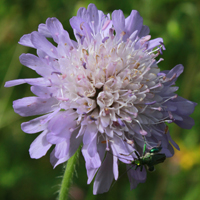 |
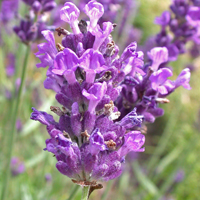 |
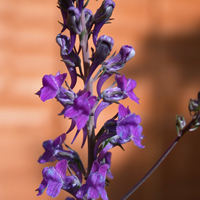 |
 |
Scabiouses - Tight heads of many flowers, with the outer flowers having larger petals
|
Lavenders - Flowerheads made up of upright clusters of tubular flowers; foliage greyish and heavily-scented foliage
|
Toadflaxes - Narrow flowers with long spurs at the back, in upright spikes
|
Broomrapes - Tubular flowers with broad lower lips, on an upright, orchid-like spike
|
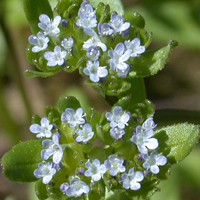 |
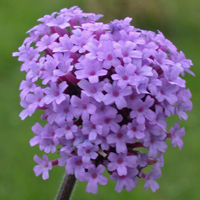 |
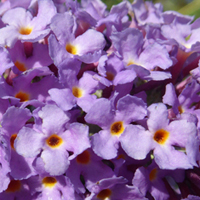 |
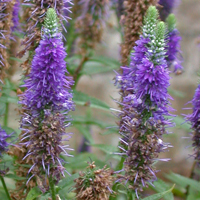 |
| Common Cornsalad - Tiny, pale blue, almost white flowers with five petals |
Vervains - Showy heads of small flowers with tubular bases
|
Butterfly-bushes - Elongated heads of masses of small flowers with tiny orange centres, on woody bushes
|
Speedwells - Showy spikes of tightly-packed flowers with prominent stamens
|
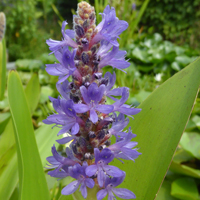 |
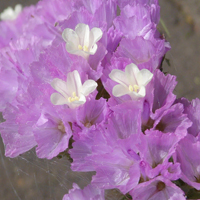 |
| Pickerelweed - Flowers crowded in upright spikes on plants growing in water |
Statice - Branched heads of many, small (white) flowers surrounded by large, petal-like, purplish bracts
|
 |
 |
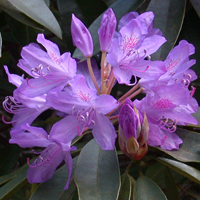 |
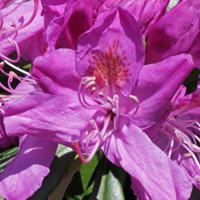 |
Passionflowers - Complicated flowers with 12 petal-like sepals; vigorous climbing plants
|
Teaplants - Solitary, purplish flowers on wiry, half-woody stems in hedgerows |
Rhododendrons - Large, spreading bushes with leathery, evergreen leaves
|
Rhododendrons - Large, spreading bushes with leathery, evergreen leaves
|
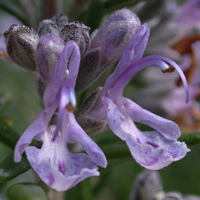 |
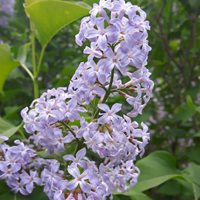 |
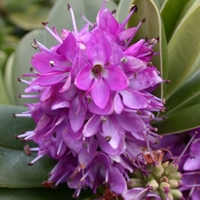 |
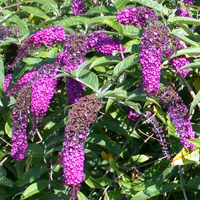 |
Rosemary & allies - Showy flowers with tubular bases and large lower lips on many-stemmed, highly fragrant bushes
|
Lilacs - Large, showy heads of four-petalled flowers on suckering large shrubs or small trees. Flowers purple, red, pink or white
|
Hebes - Rounded or elongate heads of four-petalled flowers with prominent stamens on evergreen bushes
|
Butterfly-bushes - Elongated heads of masses of small flowers with tiny orange centres, on woody bushes
|
 |
Lavenders - Flowerheads made up of upright clusters of tubular flowers; foliage greyish and heavily-scented foliage
|